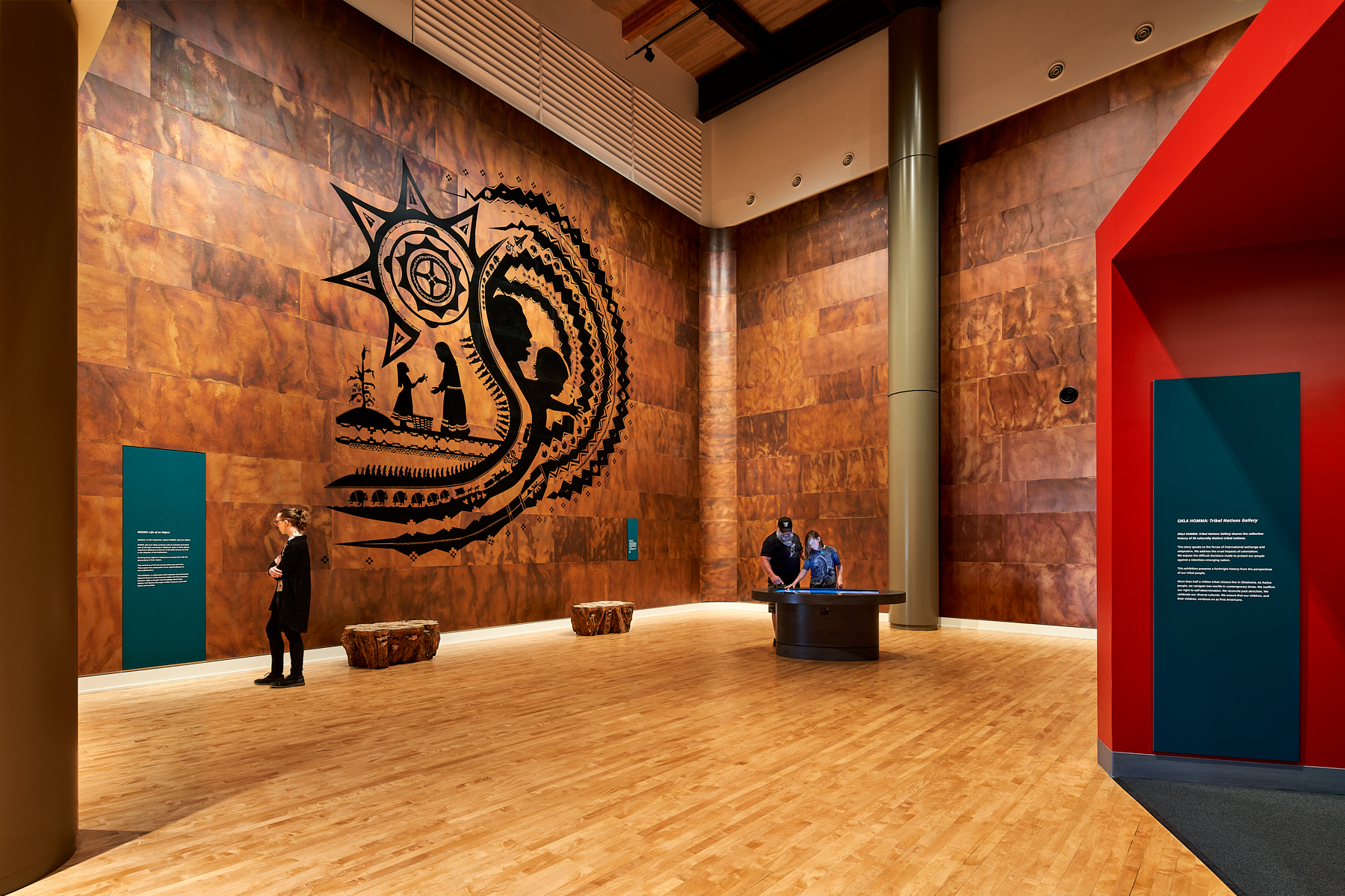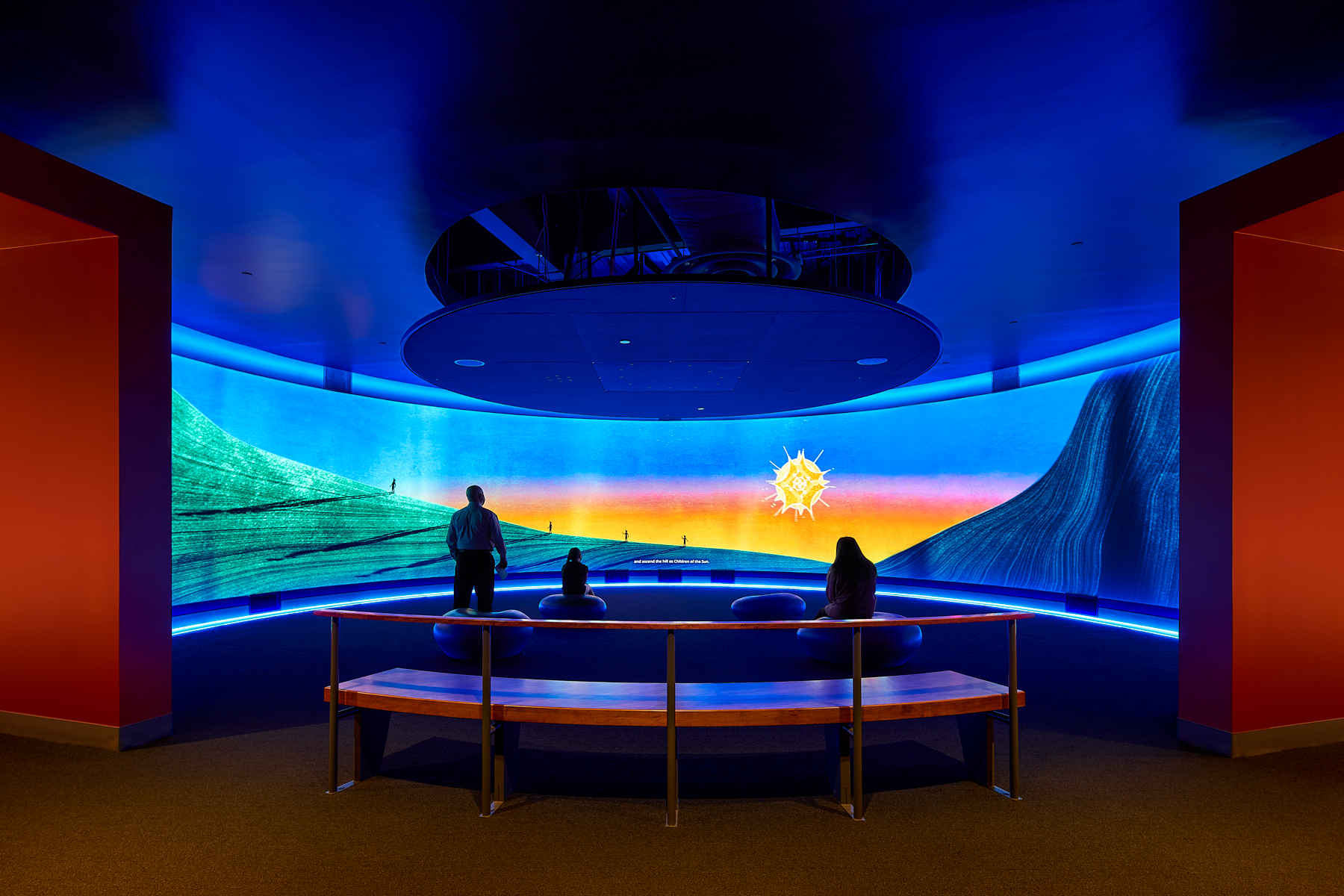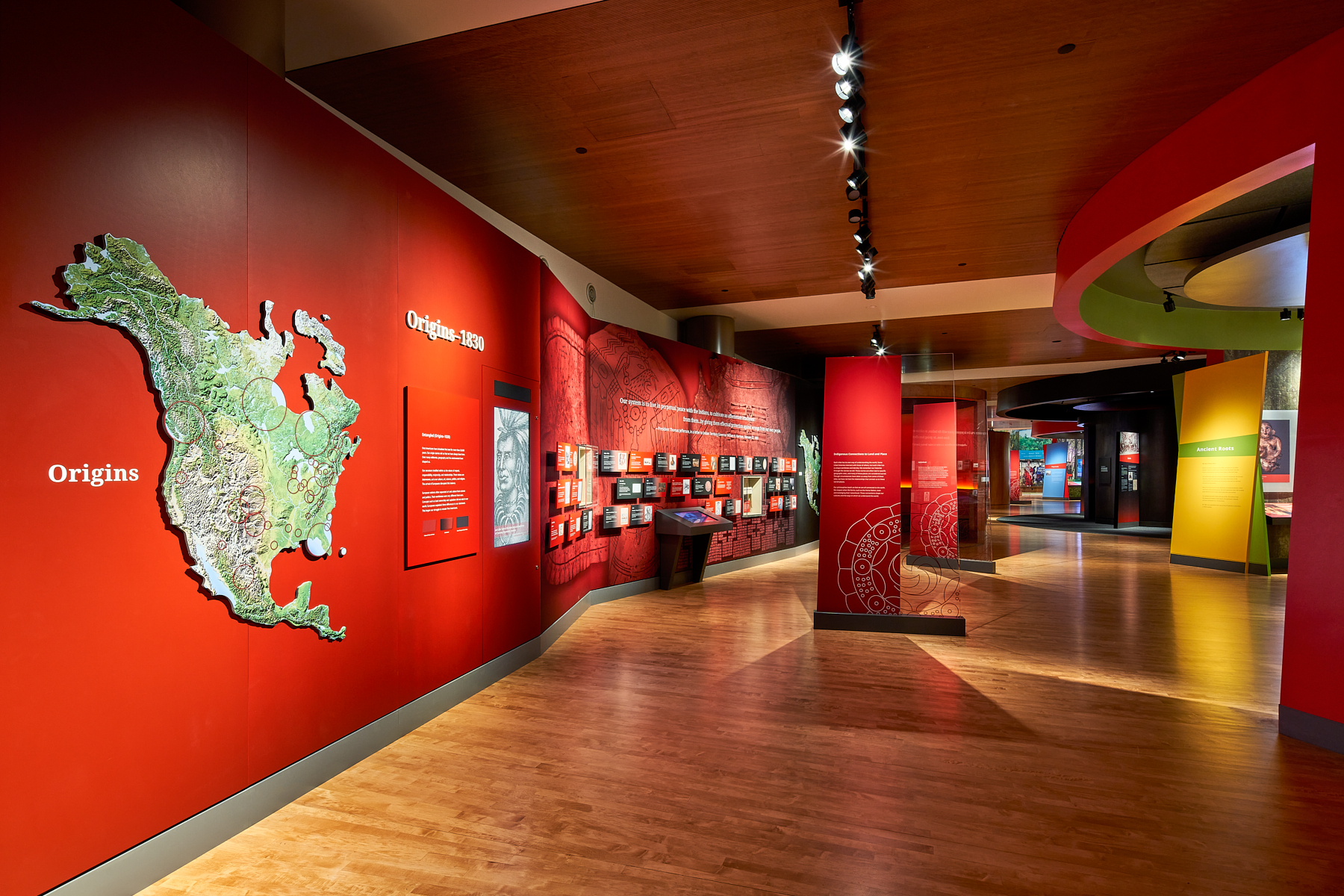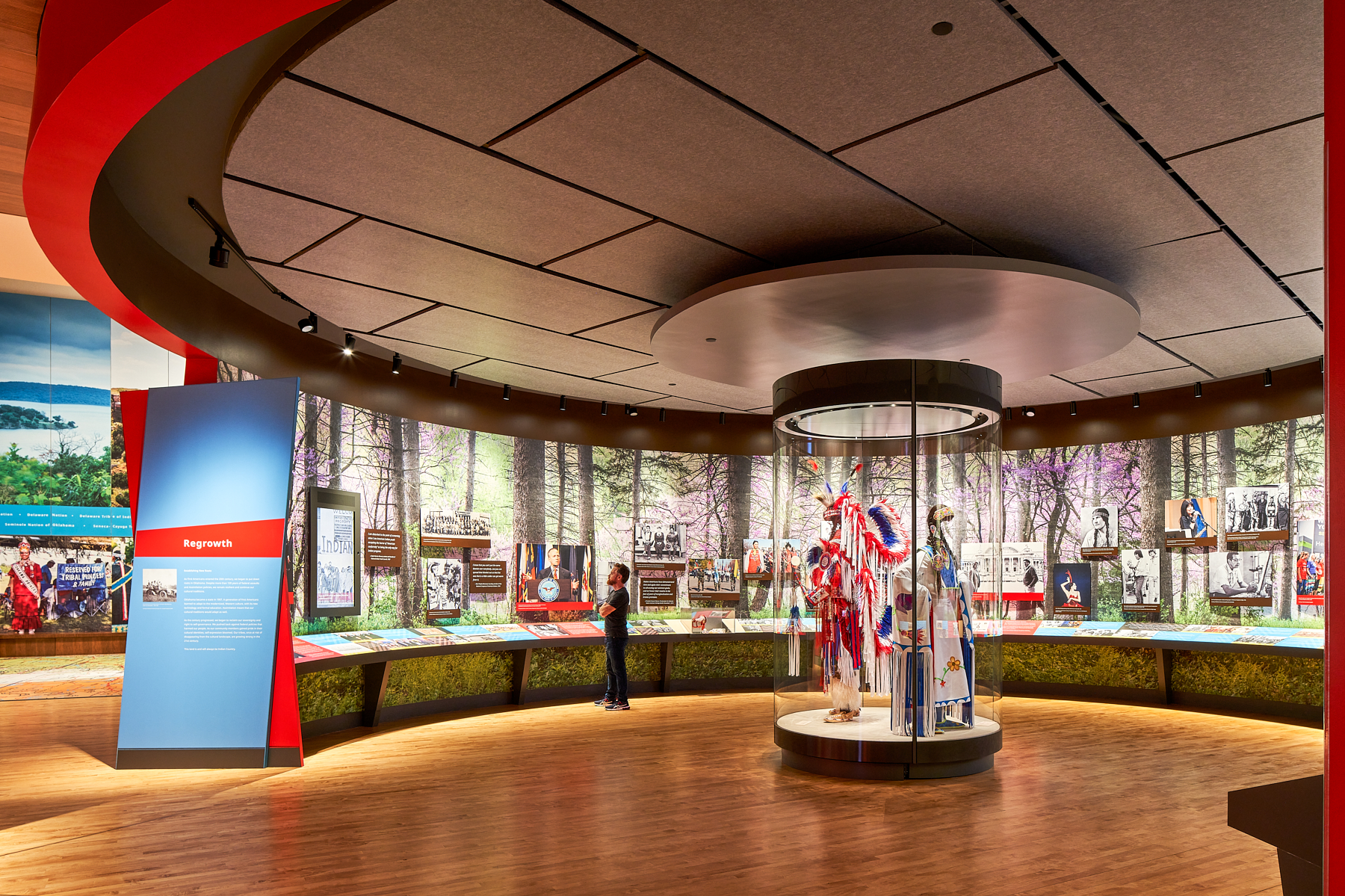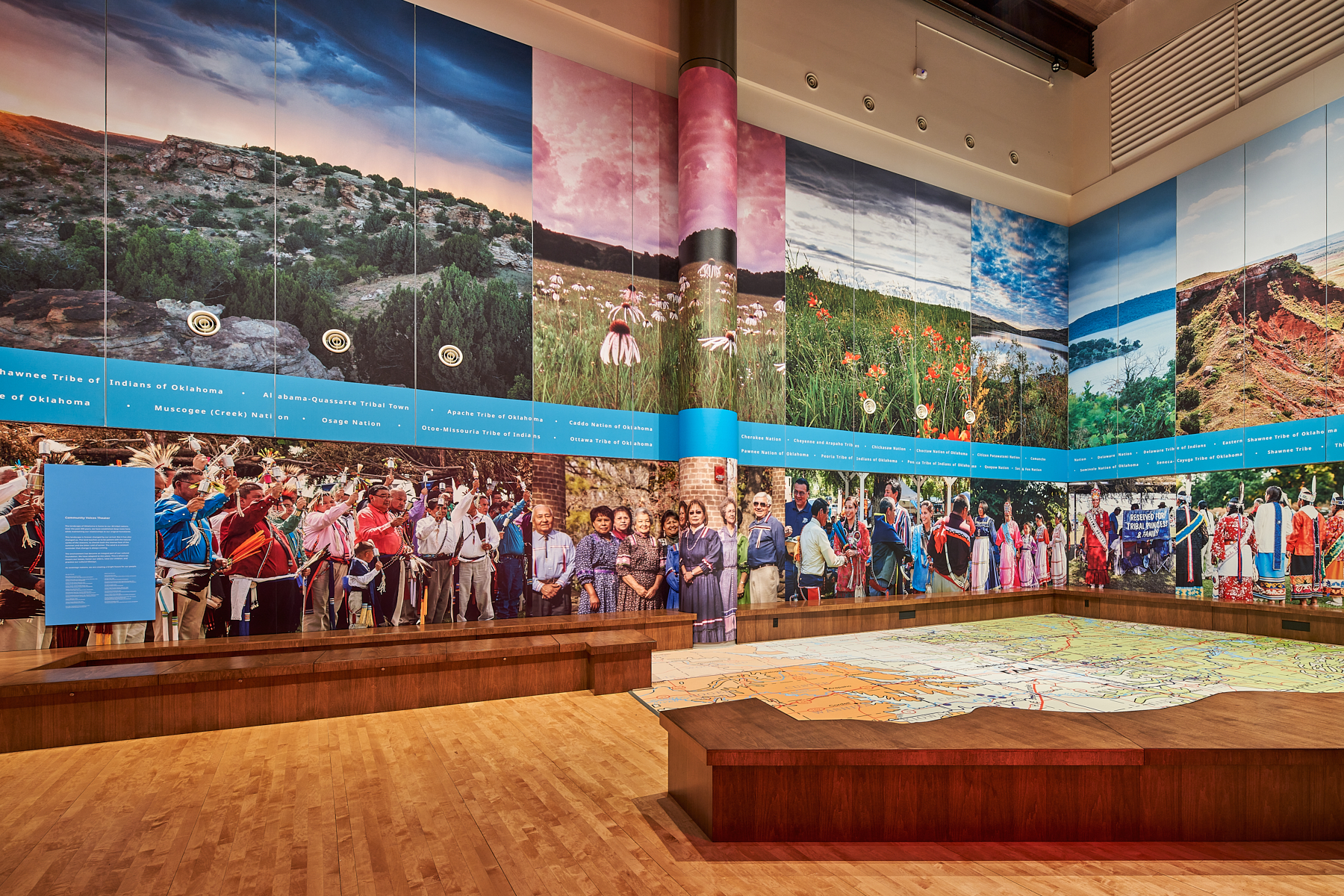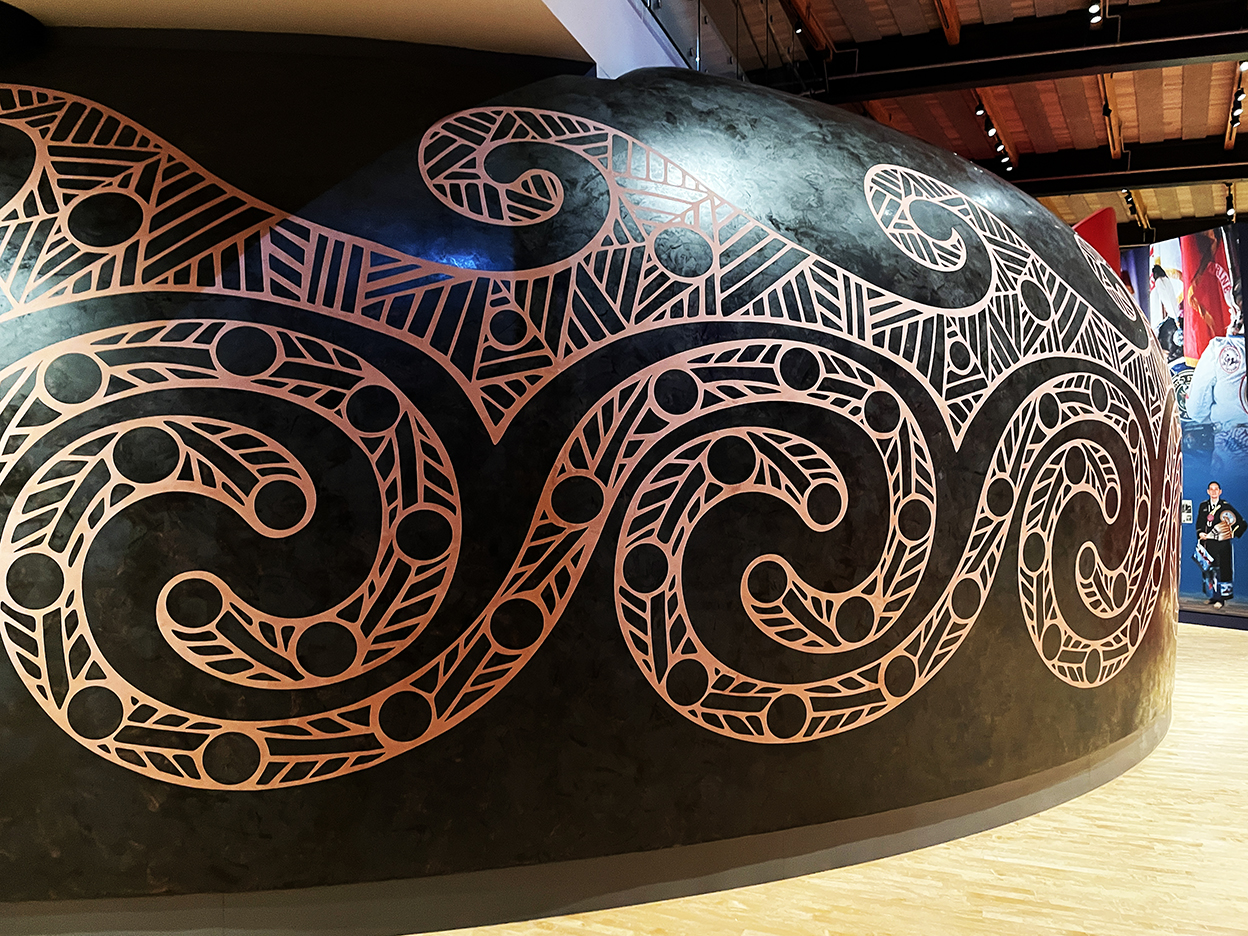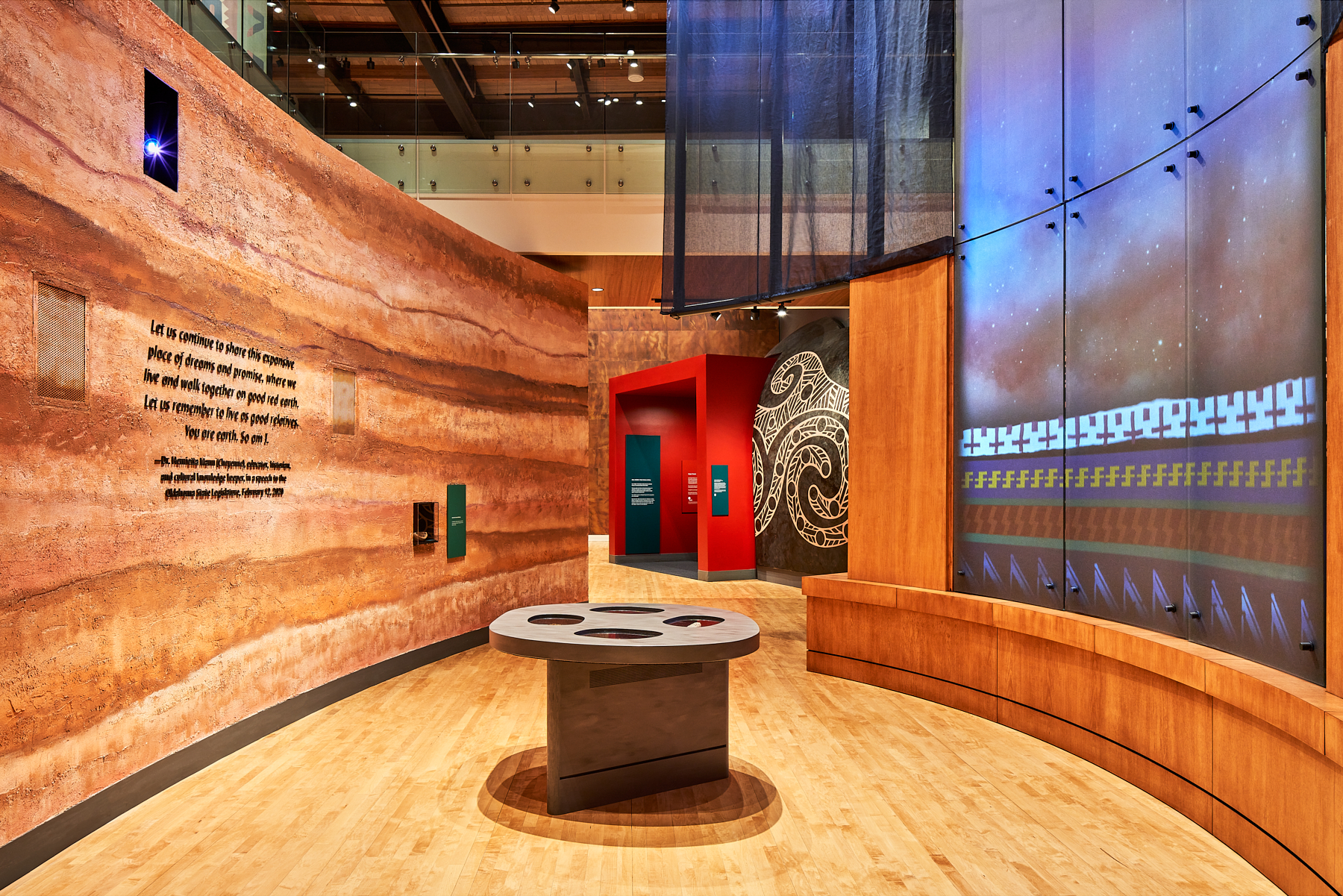The First American Museum
Oklahoma City, Oklahoma
Project Size: 26,000 square feet
Designers: Ralph Appelbaum Associates
One Family
The First Americans Museum (FAM) offers a remarkable opportunity for visitors to experience the collective histories of 39 distinctive First American Nations in Oklahoma today, sharing their cultural diversity, history, and contributions. Even the museum’s location—in Oklahoma City, Oklahoma at the Crossroads of America, the confluence on Interstates 35, 40, 235 and 44—speaks to its function as a place where multiple cultures and histories intersect in both a physical and visual representation of indigenous life.
Most visitors who arrive will be learning for the first time that only a few tribal Nations were indigenous to what is now the State of Oklahoma, and how all others were removed from homelands across the contiguous United States to Indian Territory. The state’s name comes from two Choctaw words “Okla” and “Homma” meaning “Red People.” Within its walls, the First Americans Museum houses fascinating exhibitions that aim to fulfill the museum’s mission of promoting awareness and educating the broader public about the First Americans Nations in Oklahoma, past and present.
Working with the project’s designer, Ralph Appelbaum Associates, kubik maltbie was determined to reflect the FAM mission of celebrating the unique cultures of the First American Nations in each of the exhibits. kubik maltbie’s scope of work involved a wide range of support that included exhibit millwork, conservation casework, AV hardware integration, floor coverings, wayfinding signage, exhibit lighting, scenic treatments, artifact mounting, and electrical tie-in.
Located on the first floor, the OKLA HOMMA Gallery is a signature exhibition that speaks to the diverse stories of the 39 tribes in Oklahoma today. This 18,000 square foot gallery examines enduring subjects, including collective histories, (mis)representation, sports, games, and warriors, and features works of art, interactive media, and film. Digital media elements integrated into the exhibition immerse visitors in the tribal, historic, and personal stories of generations of First Americans. kubik maltbie created the 270-degree Origins Theater that presents four tribal Origin Stories scripted, narrated, and animated by Native community members. One fascinating addition that the team worked on was the moving fire audio pods: storytelling experiences that honor oral histories that describe Native peoples’ experiences in ancestral lands, the hardship of removal and assimilation and hopes for the future. Another highlight of the gallery is a four-dimensional soundscape that celebrates the songs, languages, and natural sounds of Native life in Oklahoma today in the Community Voices theater. Importantly, OKLA HOMMA represents more than a decade of careful consultation with each of the 39 tribes, Knowledge Givers, and scholars.
Arriving on the mezzanine floor of the museum, visitors encounter the gallery WINIKO: Life of an Object, Selections from the Smithsonian’s National Museum of the American Indian. Winiko is the Caddo word for everything on earth, in the universe, and beyond. This term reflects the Native belief that their cultural materials hold the spiritual essence of their makers and those who wore or used them. In this gallery, exquisite cultural materials reveal the creative diversity of the tribes in Oklahoma through the present day. In addition to contemporary commissions and new acquisitions to the FAM collection, WINIKO draws from the holdings of the Smithsonian’s National Museum of the American Indian (NMAI). Selections include over 100 cultural materials collected from tribes in Oklahoma in the early 1900s. The kubik maltbie team worked closely with the Smithsonian on various cabinetry and exhibit elements for the Smithsonian’s contributions, ensuring that their archival objects and the cases for them were presented properly. Click Netherfield provided the conservation casework for kubik maltbie for the WINIKO exhibition.
The histories of these tribes are ones of resiliency. The work that kubik maltbie and its partners completed for the FAM Museum honors the stories of the First Americans by providing beautiful and innovative exhibits that reinforce the museum’s core values of respect, reciprocity, relationships, and responsibility.

